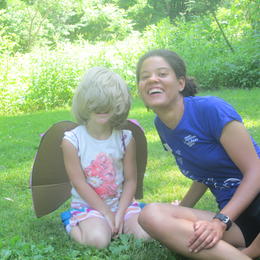This time of year, I try to sneak in as many celebrations as I possibly can. I find it to be the best remedy to long, dark nights. At the Green Mountain Audubon Center this means celebrating the Solstice. Playgroup participants have been collecting items to decorate a Solstice Tree in the arboretum. Students at Brewster Pierce Memorial School are making bird feeder ornaments to hang around their outdoor classroom. Forest Preschoolers will be making bird-friendly wreaths. We have been saying “thanks” and showing our gratitude to nature. ‘Tis the season.

What and when is the solstice? The winter solstice is the shortest day of the year (or longest night, if you’re a cup-half-full kind of person) and will happen December 21 at 11:28 AM in the Northern Hemisphere. At that moment, the sun’s height in the sky is the lowest it will be for us all year. If you are in the Southern Hemisphere, you are enjoying the height of summer with your longest day as the sun reaches its southern-most point.
Why is there a solstice? Here’s where that 23.5 degrees comes in. The Earth does not rotate perfectly straight up and down as it moves along its orbit. Its axis is angled at 23.5 degrees. When Earth spins each day the sunlight strikes the surface at an angle. Imagine holding a flashlight on at your side with your arm held straight towards the ground. What shape would the orb of light be? A near perfect circle. Now hold your flashlight out in front of you so the light strikes the ground at an angle-what shape is it? An oval that is dimmer farther away from you. When the Northern Hemisphere is tilted away from the sun, those warming rays are like that oval of light. Here in Vermont it means the sun (when it makes it through the clouds at all) creates very long shadows and we are in Winter. When we are tilted toward the sun, we get that light head-on and enjoy the Summer Solstice, with long days and short nights.
But wait a minute- isn’t Earth closer to the sun at some point in its orbit? Yes. Earth travels around the sun in an elliptical pattern, meaning there is a point when we are closer to the sun. This happens in January, which is dead winter here in Vermont. So don’t be fooled, this is not what creates the seasons.
My favorite thing to tell kids when we are exploring the solstice is to tell their parents at the dinner table that the earth is tilted 23.5 degrees on its axis. So go impress some friends and family while you decorate your Solstice Tree.
Helpful resources to explore:




